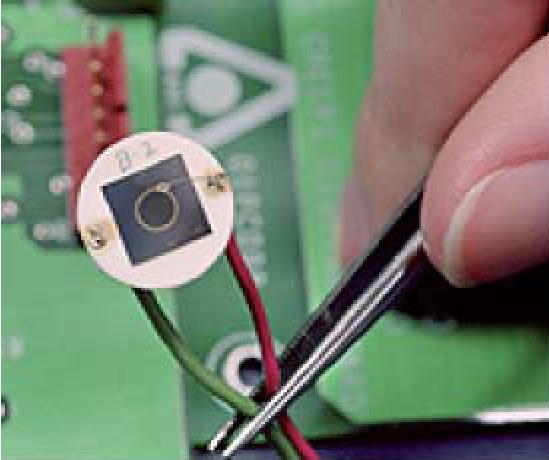|
Images |

Prof. McGregor with a GaAs neutron detector fabricated in the S.M.A.R.T. Laboratory. The devices are mounted as requested by the customer. The one shown in the photograph has pin-outs that allow it to be plugged into standard PC boards.

A GaAs neutron detector designed and built in the S.M.A.R.T. Laboratory. The detector technology used to make the GaAs detector in the photograph was invented by Dr. McGregor in 1994. Several samples were sent to ANL for testing in their neutron beam ports. These outstanding detectors have been sent to several other DOE laboratories for various applications and testing.

GaAs neutron detectors designed, developed, built, and tested in the KSU SMART Laboratory. These detectors will be sent to Argonne National Laboratory.

A closeup view of a coated-GaAs neutron detector designed, developed, and fabricated in the KSU SMART Laboratory. The detectors are coated with a proprietary encapsulate to prevent damage to the delicate devices and wire leads. As a result, the final device is robust and sturdy.
[ KSU | Engineering | KATS | Webmail | Student Suggestions | Weather | Home ]
Copyright © 2003
Mechanical & Nuclear Engineering
Manhattan, KS 66506
(785) 532-4093